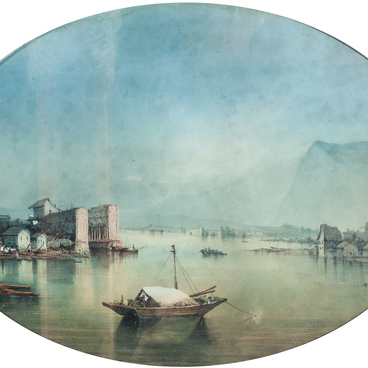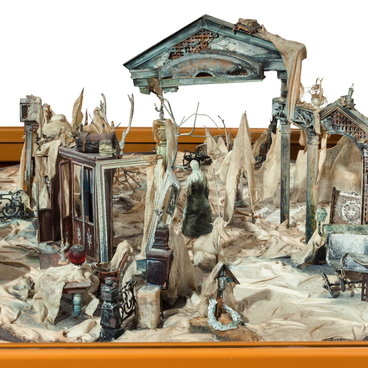The Pallada frigate was built in the early 1830s in the Okhta shipyard based in Saint Petersburg. The ship was intended for use by members of the Russian imperial family on diplomatic missions. At the order of Nicholas I, the marine architects were to use all the latest shipbuilding technologies, known at that time. The document “On making various improvements to the construction and armament …of the Frigate Pallada”, which listed 58 different items, is still kept in the archives of the Russian Navy in Saint Petersburg.
The hull and planking of the frigate were made of larch and oak, as these species of wood were firm and durable and thus considered the most suitable for shipbuilding. Expensive types of wood, such as teak, rosewood and amaranth, were used for the cabin furnishing. The Pallada was one of the first ships of the Russian fleet to have glass portholes installed in cabins.
However, the frigate had the same defect as all other wooden marine vessels: when exposed to seawater, the bottom would quickly become infested with algae, invertebrates and microorganisms. As a result, the underwater hull became rougher and the cutwater grew dull, so the whole ship moved slower. Microorganisms also caused the wood to lose its strength and rot faster.
English shipwrights found a way to protect ships from fouling. The bottom and the broadsides below the waterline were sheathed with sheets of copper or copper alloys. Copper, unlike other materials, was resistant to fouling — its ions killed microorganisms that could be responsible. In addition, the sheathing protected the ship’s hull from woodworm beetles.
On January 31, 1856, during the Crimean War, the Pallada frigate was scuttled in the Postovaya bay, Russian Far East. The ship rested on the sea bottom at the depth of 15–18 meters for over 100 years. There were several attempts to raise the frigate, which all proved unsuccessful. In 1989, the expedition organized by the Central Committee of the Komsomol was able to retrieve some metal and wood debris of the ship, including the elements of the copper sheathing and the nails that were used for attaching it.
The hull and planking of the frigate were made of larch and oak, as these species of wood were firm and durable and thus considered the most suitable for shipbuilding. Expensive types of wood, such as teak, rosewood and amaranth, were used for the cabin furnishing. The Pallada was one of the first ships of the Russian fleet to have glass portholes installed in cabins.
However, the frigate had the same defect as all other wooden marine vessels: when exposed to seawater, the bottom would quickly become infested with algae, invertebrates and microorganisms. As a result, the underwater hull became rougher and the cutwater grew dull, so the whole ship moved slower. Microorganisms also caused the wood to lose its strength and rot faster.
English shipwrights found a way to protect ships from fouling. The bottom and the broadsides below the waterline were sheathed with sheets of copper or copper alloys. Copper, unlike other materials, was resistant to fouling — its ions killed microorganisms that could be responsible. In addition, the sheathing protected the ship’s hull from woodworm beetles.
On January 31, 1856, during the Crimean War, the Pallada frigate was scuttled in the Postovaya bay, Russian Far East. The ship rested on the sea bottom at the depth of 15–18 meters for over 100 years. There were several attempts to raise the frigate, which all proved unsuccessful. In 1989, the expedition organized by the Central Committee of the Komsomol was able to retrieve some metal and wood debris of the ship, including the elements of the copper sheathing and the nails that were used for attaching it.



